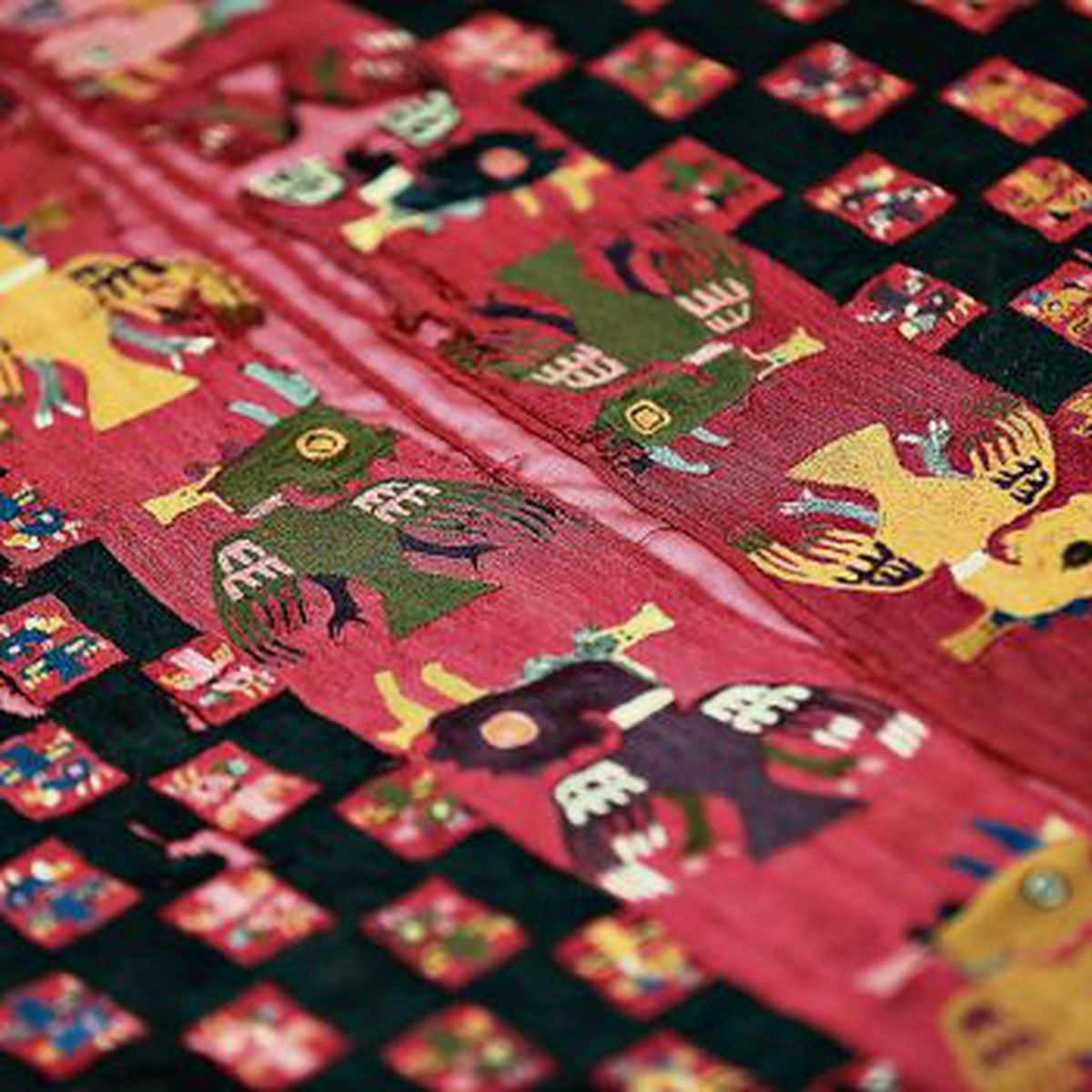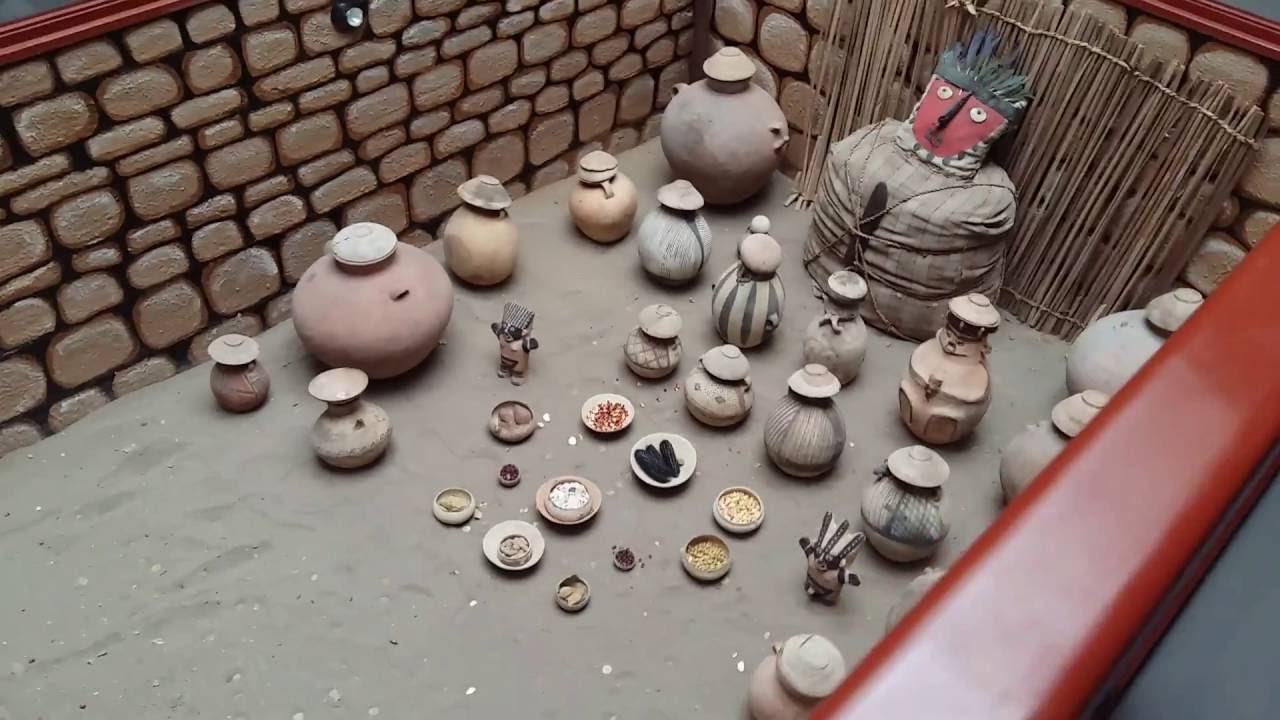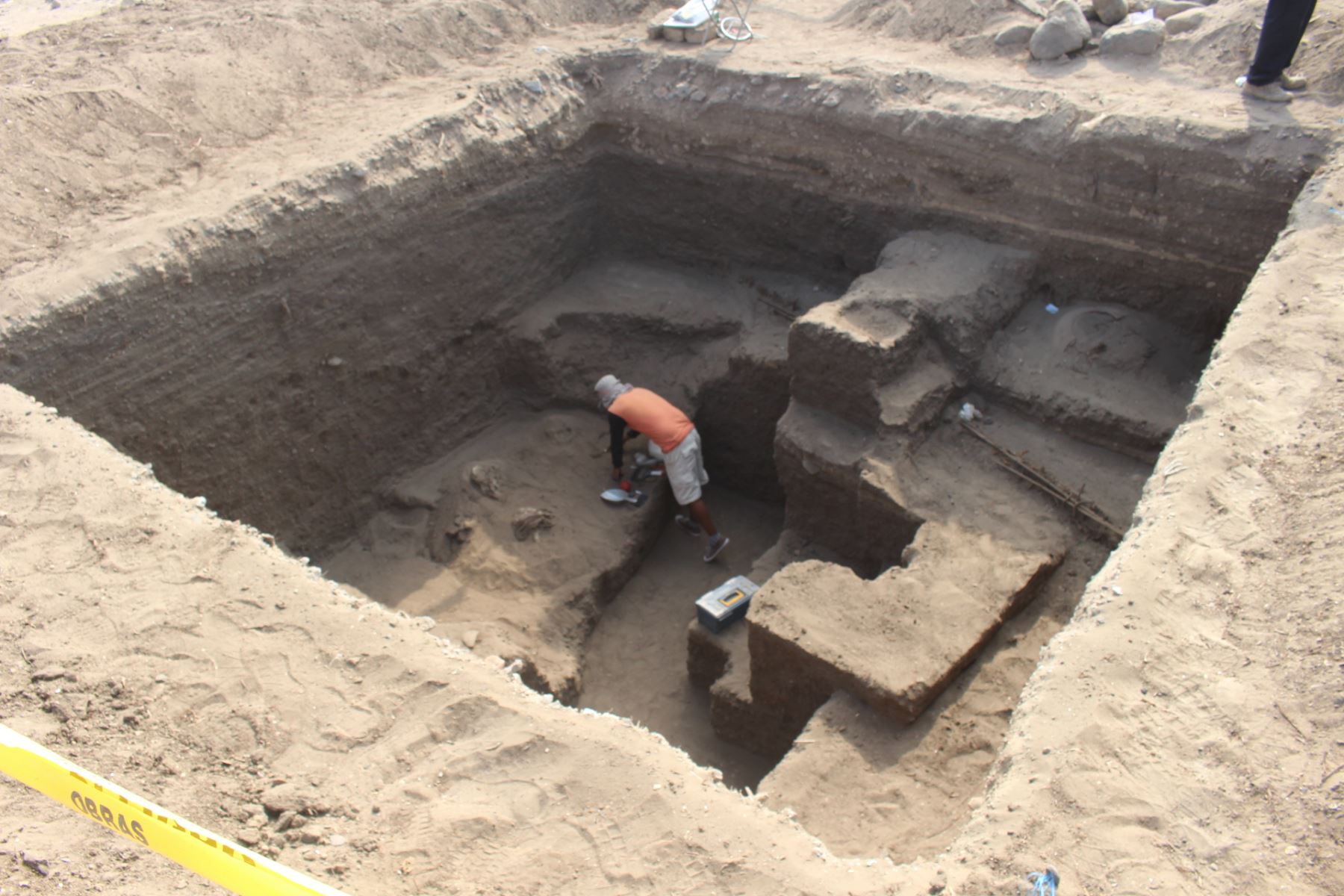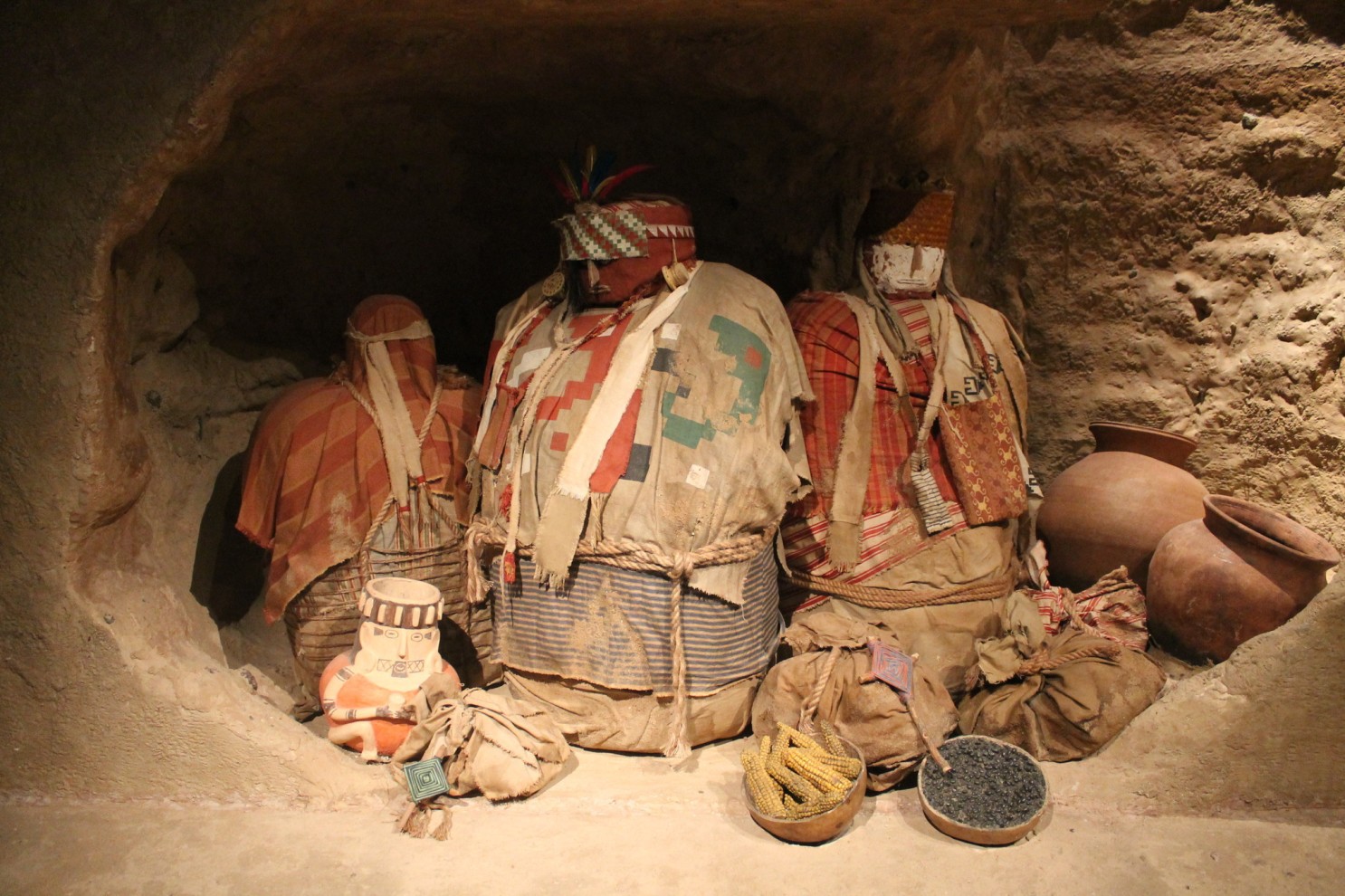On the central coast north of Lima was the territory where one of the most representative and least studied civilizations of Andean history "Los Chancay" was established. That is why, through this article, we invite you to learn a little more about the Chancay Culture and their characteristics.
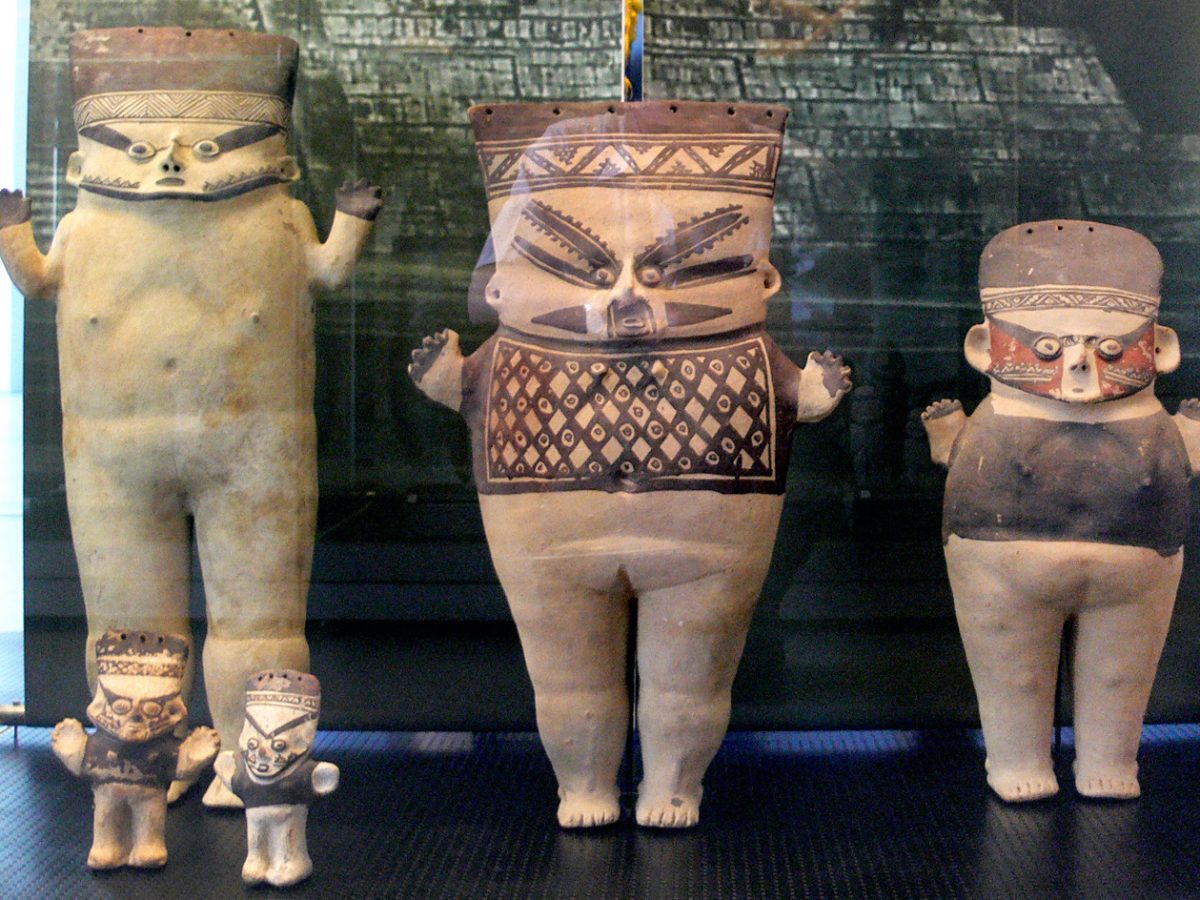
General aspects of the Chancay Culture
The Chancay culture is a pre-Inca society which was established between 1200 and 1470 AD in the central coastal areas of Peru, after the decomposition of the Wari culture.
There is the notion that this culture was a fairly populated society according to the findings found in archaeological investigations; Based on this, there are many places that support this assertion, such as the cities built by the Chancay in Pisquito Chico and Lauri, which functioned as administrative and ceremonial headquarters.
As well as, Pancha La Huaca as a housing complex, government; There was also El Tronconal, which at the time was established as a small village. The set of all these places thus concentrated a large number of artisans dedicated to large-scale production.
Their economy was based primarily on agriculture and trade, in which the latter managed to develop very extensively since it managed to trade with other neighboring cultures and communities. In addition, they were fishermen par excellence, the sea was an inspiration for the development of their crafts, which they developed through weaving, ceramics and other types of arts.
According to the architecture of these, they came to build cities with mounds, as well as building complexes also associated with great works of hydraulic engineering, such as terraces of reservoirs and canals.
Finally, the Chancay culture began to decline in the fifteenth century, when the conquerors dominated the Inca government. In 1532, its temples were covered with new ones, a symbol of the religious revival imposed by the settlers; but it was in 1562, following the orders of Viceroy Diego López de Zúñiga y Velasco, that Luis Flores founded the city of Chancay under the name of Villa de Arrendó.
Geographical location of the Chancay culture
The Chancay culture prevailed primarily between the Chancay and Chillón valleys. However, he had a persuasion as far as Huaura in the north, and the followed bank of the Rímac River in the south, in the late intermediate time.
It is believed that the main territory was established in Chancay, possibly its capital being the city of Soculacgumbi (Pueblo Grande), as previously mentioned, the other most important cities of this colony were Pisquito Chico and Lumbra.
Chancay Culture: Social and Political Organization
There is no certainty of what the social and political composition of the Chancay culture was, but the anthropological and archaeological investigations of this native people have given evidence that this society had established a centralized political structure. The Chancay culture is believed to represent a small regional state. Ethnohistorical tales indicate that the system of government was conquered by the Chimú Empire, as part of its expansion.
On the other hand, this culture has reached a sociopolitical structure managed by priestly castes in the different colonies. That is to say, there was not a single emperor, but several rulers, who governed the manors throughout the territory of Chancay; state power had a large political presence, sharing it with merchants and judicial officials.
The rest of the population consisted of a large social sector responsible for producing goods, providing services for the maintenance of temples and cities; this group was generally made up of peasants, artisans and fishermen.
Economy of the Chancay culture
The Chancay founded their economic sector based on the advancement of agriculture, the exercise of fishing and the commercialization of their products with other civilizations.
As for agriculture, expert builders carried out works such as water tanks and conduits, which were used for irrigation in the plantations. Instead, the towns that were located off the Peruvian coast, decided to apply fishing in the traditional way on the shores of the beaches and sometimes go a little further into the water in a small boat for one person, which they called totora horse
In relation to trade, this was very significant for this society, since through the connection with other civilizations they managed to exchange and market their agricultural products, also those manufactured by hand such as those made with wood, ceramics and precious metals. It is important to note that the Chancay achieved their marketing channels by sea and land. By sea they approached along the coasts in the reed horses, and by land they entered the jungles and highlands.
Cities such as Lumbra, Tronconal, Pasamayu, Lauri, Tambo Blanco and Pisquillo Chico, were the ones with the largest population of artisans from this culture, who elaborated their works en masse for later commercialization. However, this society had a representative figure that managed and controlled all the commercial activity as well as the festive activities, these were represented as the curacas.
Textile Crafts
Something distinctive of this culture was the making of fabrics and tapestries sewn into lace manually with needles; The materials they used for this work were wool, cotton, linen and feathers to decorate them, the designs and the way they were made are considered exceptional today.
They also highlighted the techniques used for brocade, linen and colored textiles, and adorned with birds, geometric patterns and fish.
In relation to the work of the gauze, these were spun in cotton with which elements with square shapes of different sizes were manufactured, they also add animal figures to these works. To make the nuanced and colored details on the fabrics, they used a brush which directly captures the designs and drawings.
The fabrics manufactured by this culture had religious and mystical purposes, for this reason they were used to cover the heads of the deceased, as headdresses. According to the superstitions of these times, the threads should wind in an «S» mode, in a left direction.
This thread called lloque, had a magical representation, which wrapped the garments with supernatural powers, since it was believed that they protected the deceased on his journey to the afterlife.
In the same way, based on a plant tissue, they made dolls and various cutlery with the remains of various fabrics and threads.
Regarding the art of feathers, the work and the composition of the shading of these, it was much more evolved than that carried out in the creation of ceramics. This is how the mixtures and engravings that its colors cause in the making of the coats are extraordinary; the feathers were inserted into a main thread which was then sewn onto the fabric.
Ceramics
The improvement regarding the elaboration of ceramics, was a very characteristic activity of this society. These created works were primarily found in the cemeteries of the Ancón region, as well as in the Chancay Valley. The manufacture of ceramics was carried out massively, due to the use of molds.
During archaeological studies on this culture, ceramics of various sizes and decorated with more than 400 designs were found, which to this day continue to be investigated, to discover the mystery that surrounds it; these are characterized by having a rough surface, they are painted in a black or brown hue on a light or white background, motivated by this these works are known as black on white.
Of this type of works, the oval molded amphorae with human faces stand out, and enhancements representing the extremities of the human body, as well as the tiny statuettes named cuchimilcos, anthropomorphically figured similar to human figures with a pronounced jaw and the black tinted eyes.
Likewise, they reflect them with their arms outstretched as if they were going to fly or offering a hug; these were usually found in the cemetery specifically in the graves of the Chancay nobility, therefore, they relate it as a spirit that welcomes the deceased, as well as a sign to ward off bad energies.
It is important to emphasize that this type of figures, the cuchimilcos, were also found in other civilizations such as Lima and Chincha, in addition these figurines are constantly accompanied by a couple, personifying the divine duplicity in which all pre-Columbian cultures affirmed.
The meaning that these types of figures had, was also contributed to the dolls that this culture made, despite the fact that due to their appearance they were believed to be for games, their reality is more than far from it. These were an object with a mystical value, they were generally worked giving dimension to the life of the deceased or of the people close and dear to him, so that they would accompany him in the afterlife.
Wood works
The molded wood works had simple characteristics, full of measure and with total naturalism in their forms, contrary to the detail and fineness of the manufacture of their textiles. As raw material, these were supported by the forests near the desert coastal area they inhabited, with this material they carved objects of various sizes and shapes, usually adding designs related to the maritime, such as boats, birds and others.
Additionally, they also developed work tools that were used to carry out textile work, agriculture and fishing; as well as a variety of objects for their religious beliefs and insignia of social status.
Sculpture
At Chancay, carved wooden human heads crowning the funerary cloth wrappings of important dignitaries are common, apparently highlighting the status of deity or mythical ancestor that these figures acquired after death. Human images made of wood can also be indicators of political power, especially when they appear engraved on poles or staffs of command.
Architecture
The Chancay culture in terms of its agriculture, this civilization stands out for the foundation of large cities for which they used mounds as pyramids and buildings, their cemeteries were also a significant representation of them.
These buildings (pyramids and buildings), were organized by different types of villages where each one had its curaca or main leader, in this type of constructions the cities stood out with the typical constructions for civic-religious commemorations, including also the residential palaces. In the case of the pyramids, to enter these it had to be done through a ramp which descended towards its interior.
To make these constructions, materials such as clay bricks were used, which were made with molds, to make their composition more durable, they usually mixed clay with stones.
Graves
The Chancay cemeteries are very significant, due to their nature and size as well as the large number of offerings that were placed in the drums that reflect social stratification, since there are also tombs with very rich grave goods, compared to that of the lower-income, where the bottom contained simple fabrics and very few offerings.
For those of the nobility, there were very luxurious mausoleums that had a square or rectangular shape, with well-plastered brick walls glued to the cut of the earth; the tomb was 2 or 3 meters deep and had a stairway leading up to it and was filled with dozens of offerings of pottery, textiles, and silverware.
In contrast, the burials of the low-income society were almost on the surface. The bodies were sitting or flexed and were found in tissue fluids and sometimes with a false head on top of the burial bundle.
Archaeological Museum
In the city of Chancay, the Archaeological Museum of the Culture of Chancay is located, located in the Castle of the city of Chancay. This museum contains furniture dating from more or less in the 23th century, and a collection of animals. This museum was established on July 1991, XNUMX, in the administration of Mayor Luis Casas Sebastián, the old castle was used as the institution's headquarters.
To continue with this, he contacted the National Museum of Anthropology and History of Peru for help, which resulted in the signing of the technical collaboration agreement between the aforementioned museum and this municipality.
Thus, at the beginning of 1992, an archaeologist took the position of exploration and preservation, preparing the institutional development plan for this museum. The museum has also received donations from some residents of the city of Chancay to its existing collection.
If you found this article of the Chancay Culture interesting, we invite you to enjoy these others:
